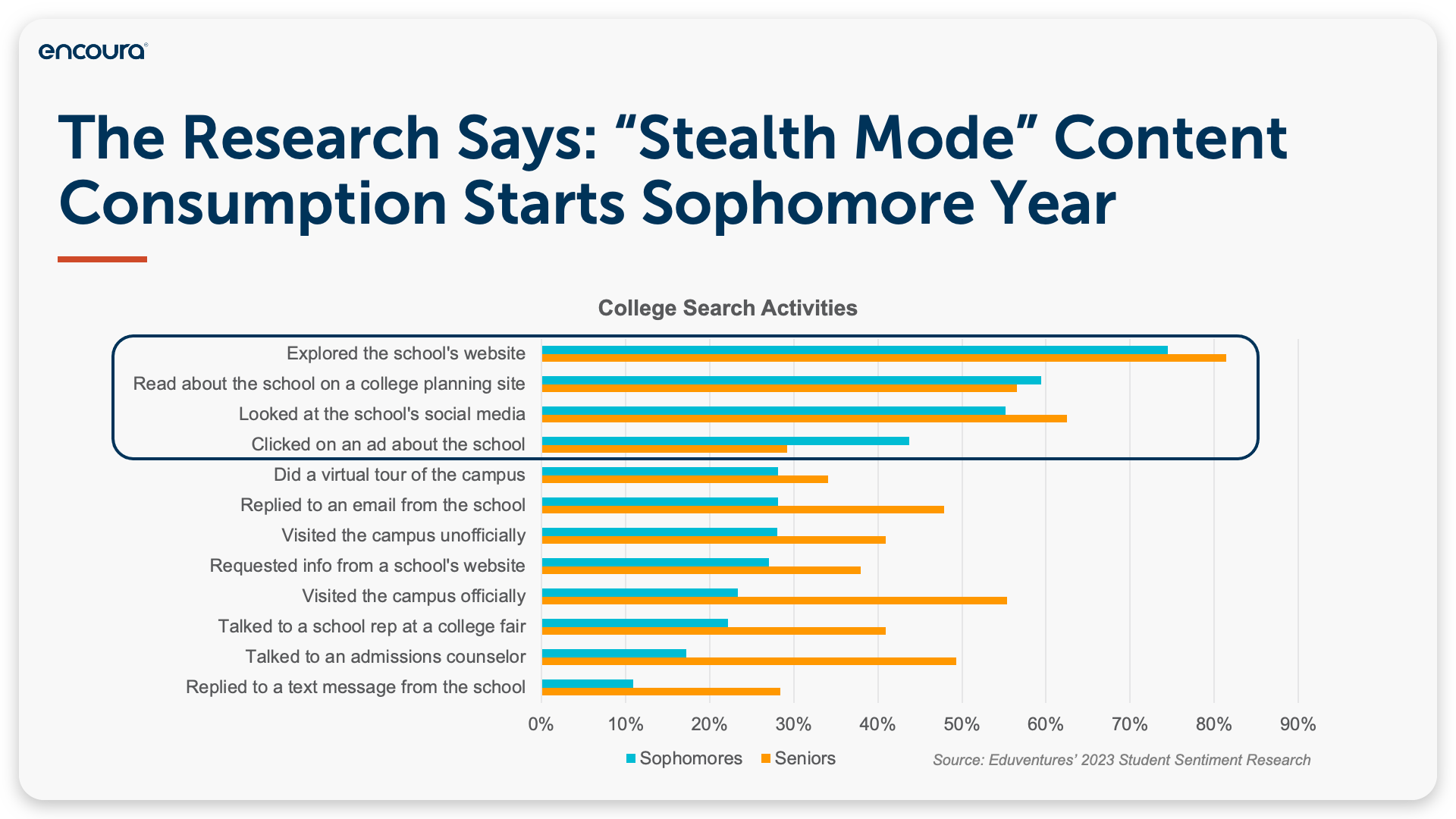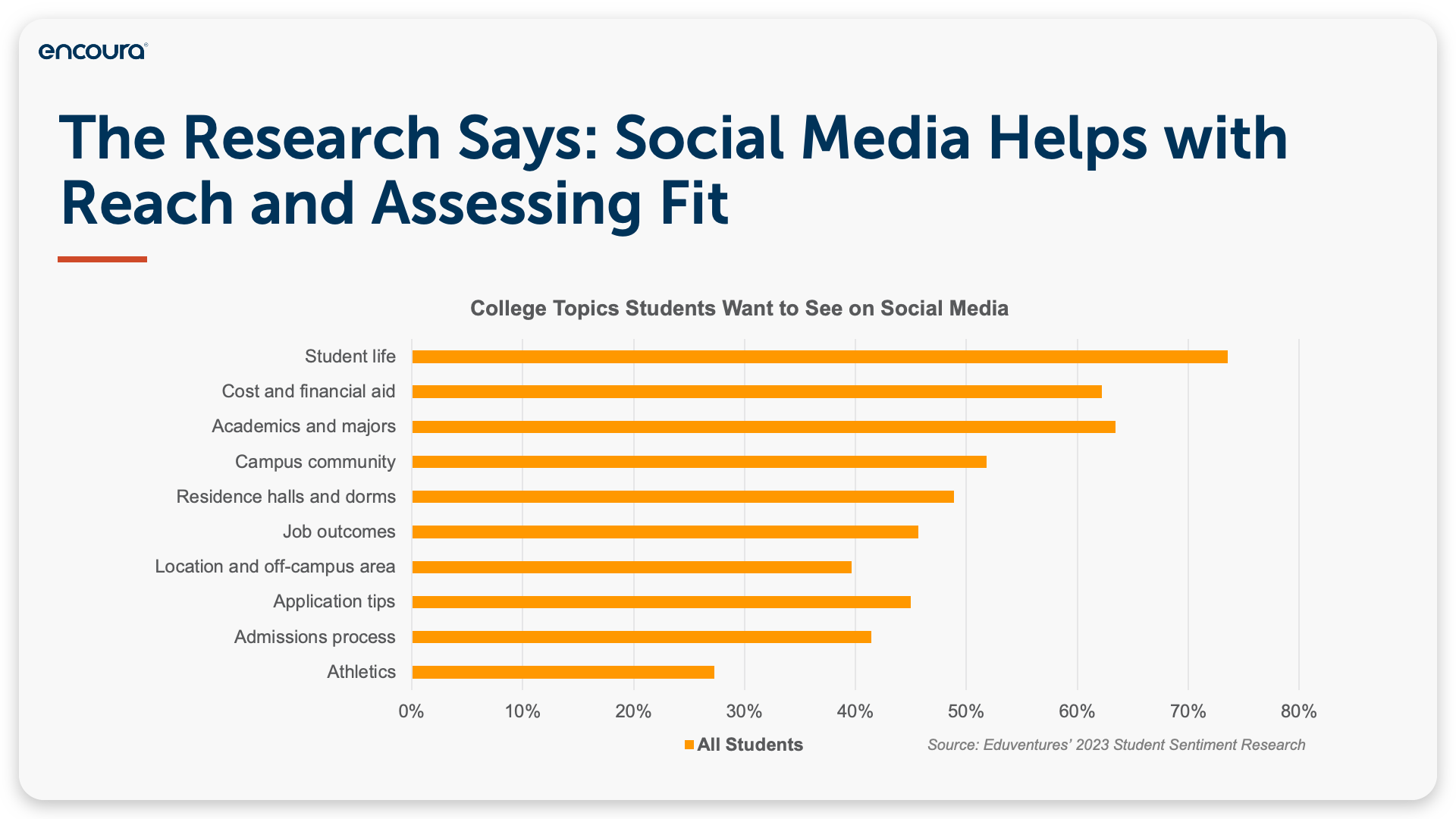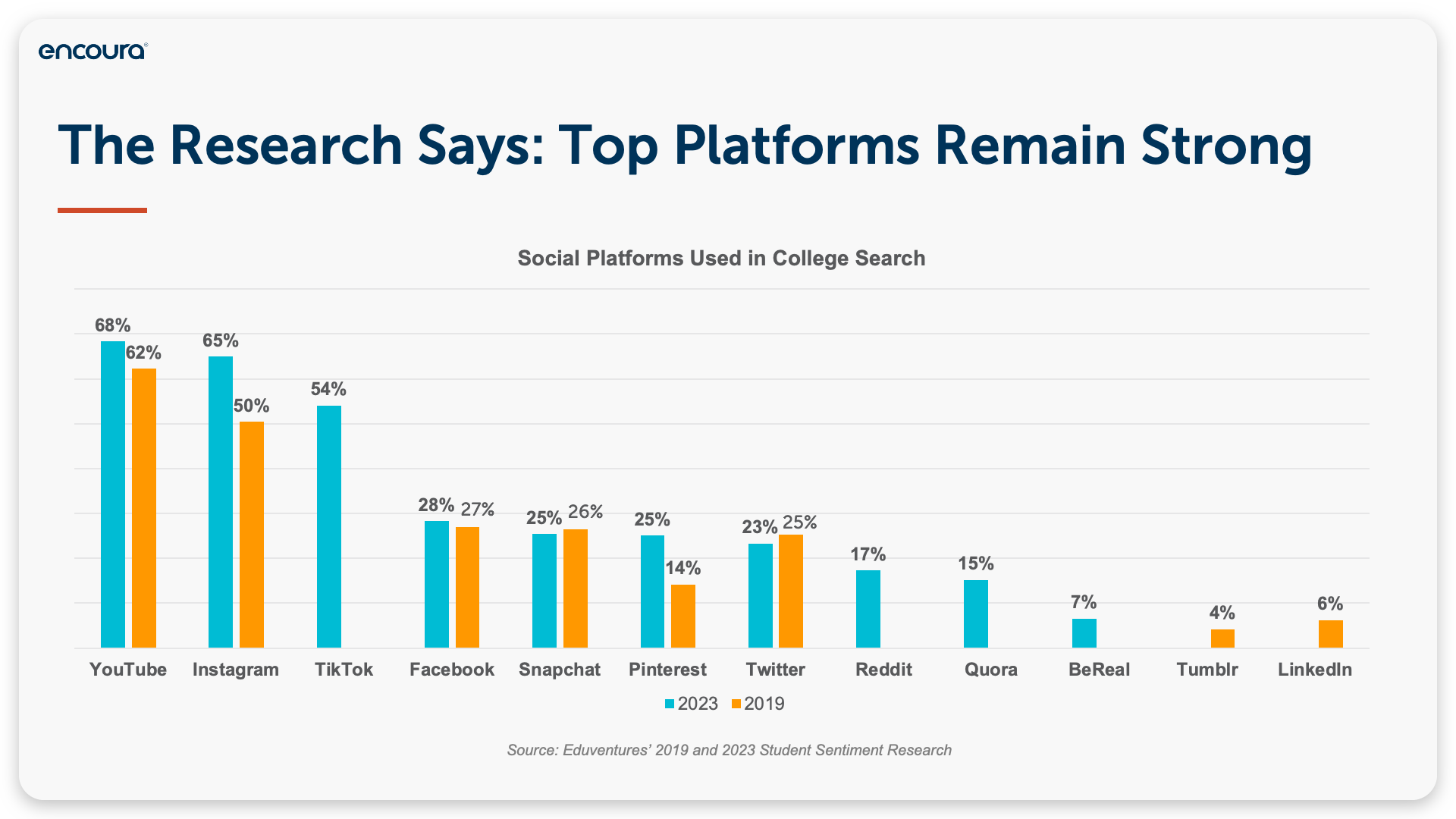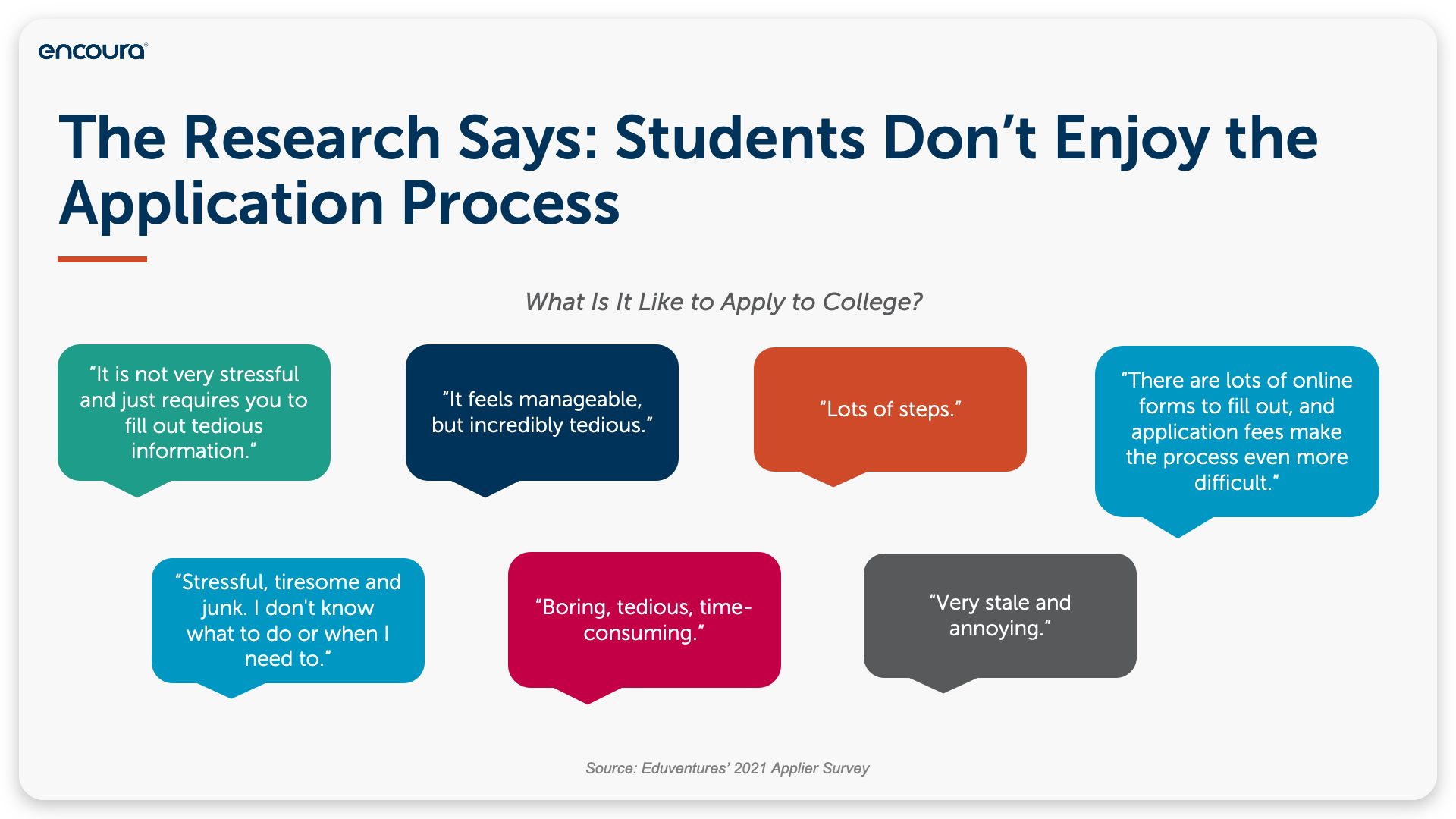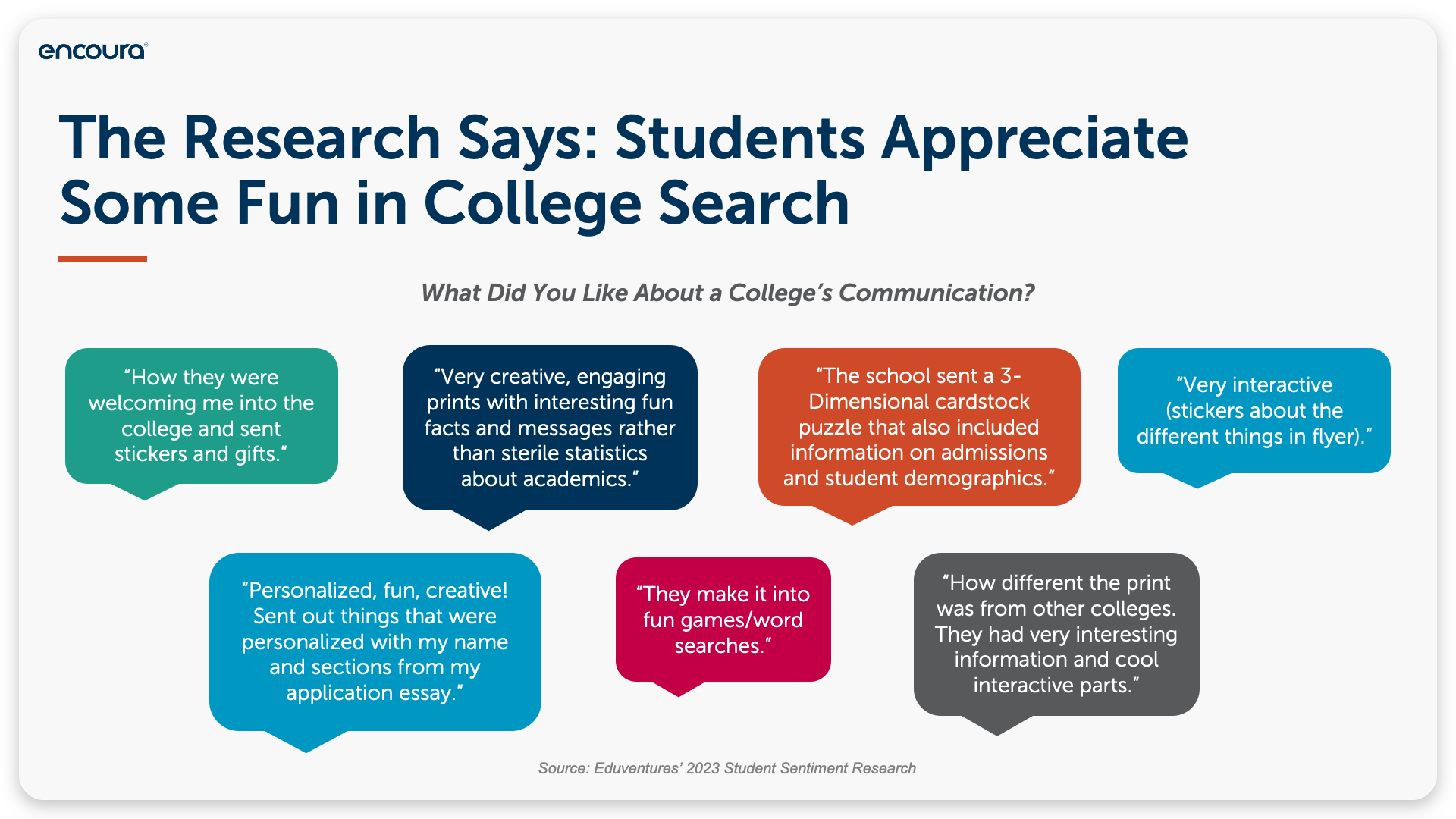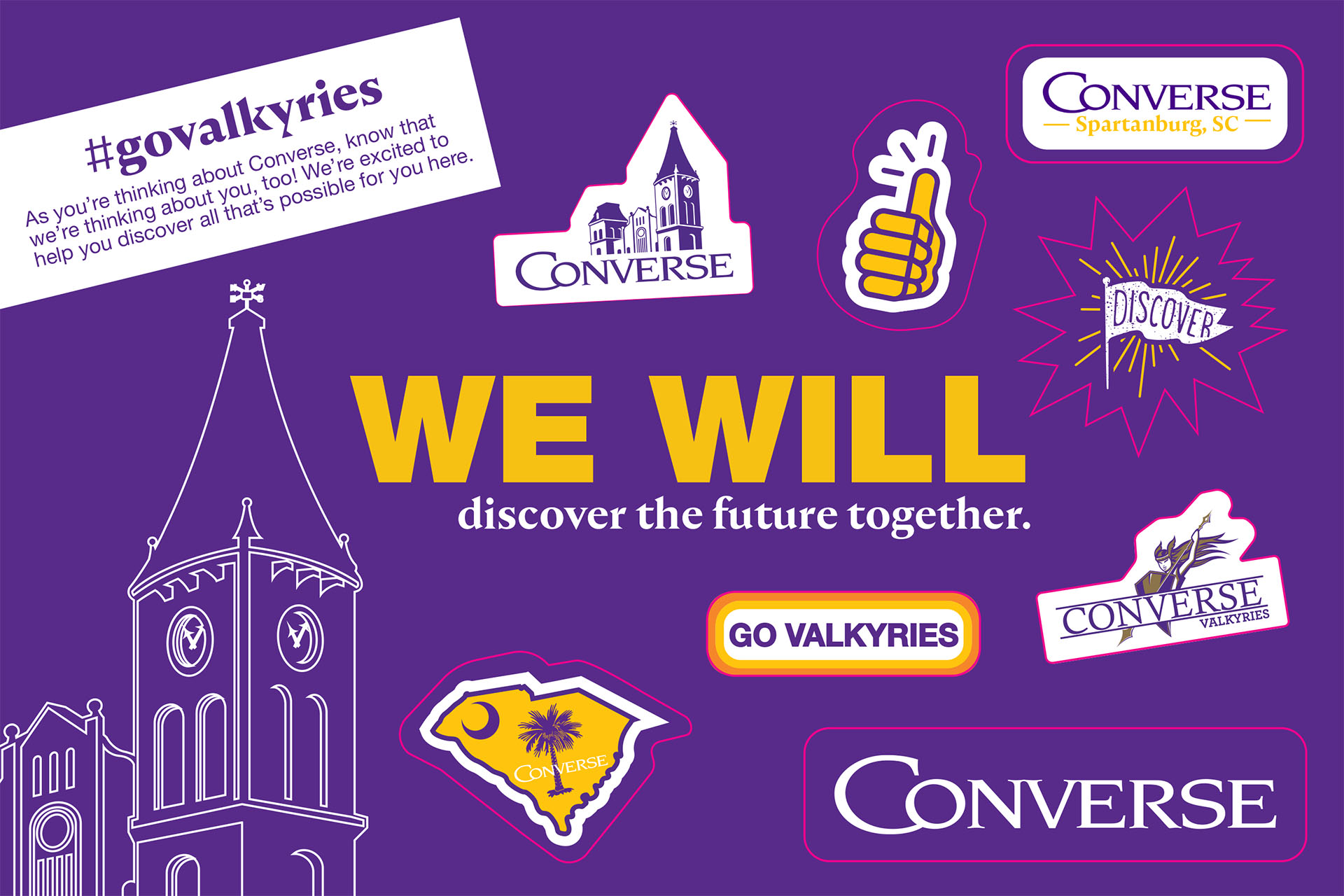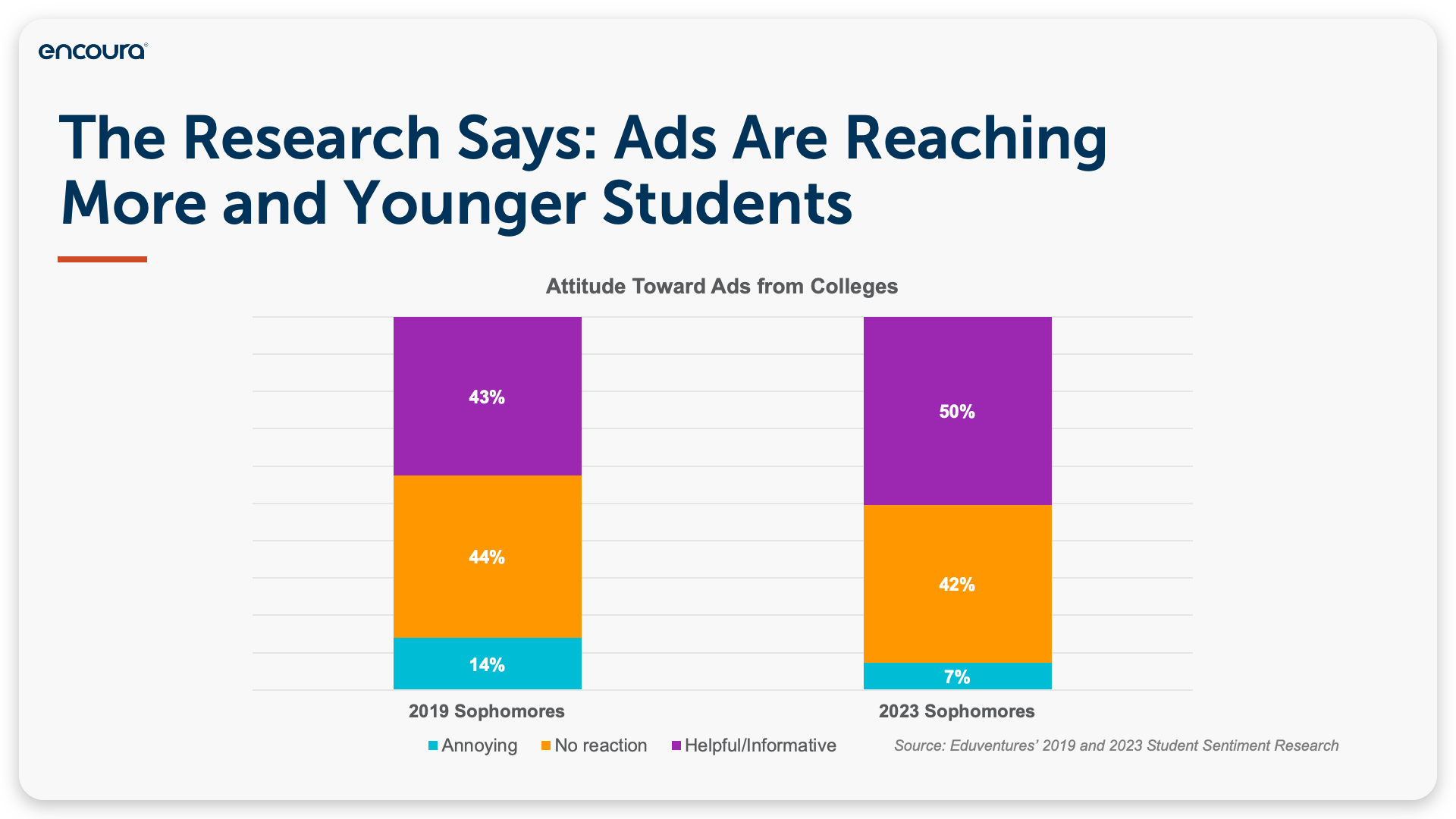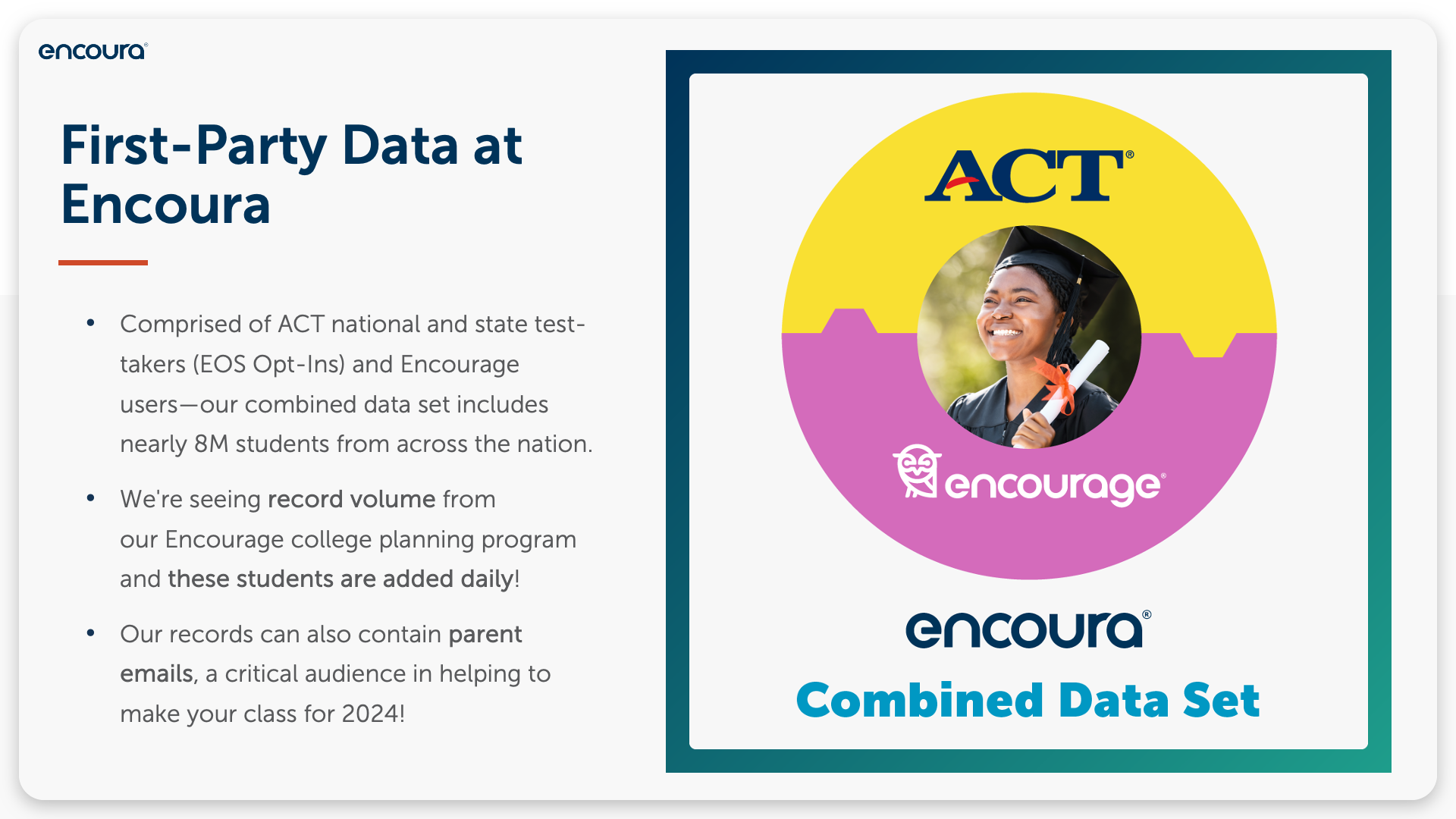Each year, Encoura’s Digital Solutions team releases a list of digital marketing trends, providing insight into top strategies enrollment and marketing teams should focus on. As we look into 2024, there are several trends of note, including preparing for a new generation of students on your campus—Generation Alpha. As your team dives into this action plan, you’ll learn what we know, what to focus on, and how to apply this at your institution.
Recommendation: Start to Understand the Differences Between Gen Z and Gen Alpha Now
Now’s the time to start thinking about strategies to reach and engage Generation Alpha (Gen Alpha). With the oldest group of Gen Alpha students (those born in 2010) about to start high school, a whole new generation, along with their likely Millennial parents, is going to start engaging with your institution. The good news is, so far, there are some significant similarities between Generation Z and Gen Alpha.
What We Know
About Gen Alpha Students and Their Online Habits
Currently aged 13 (turning 14 this year), Gen Alpha students are heading toward high school. As they begin to navigate this new landscape, the college conversation will begin to become part of their lives and the lives of their families. In fact, according to the Eduventures® Prospective Parent Research™, nearly half of parents begin looking at colleges by ninth grade.
Gen Alpha is permanently connected online and began using technology at a younger age than any other generation. Adding to this, the pandemic made a foundational impact on these students' lives as they spent years of their childhood learning remotely.
From talking to friends while playing video games such as Roblox, Minecraft, and Fortnite to engaging with a wider network on their favorite platforms like TikTok and YouTube, these students have access to many devices and use multiple screens at once. In addition, the majority of Gen Alpha parents are Millennials, so these more digitally inclined parents have been sharing their childrens' photos online since birth.
What the Research Says
Forecasts from the Eduventures Higher Education Demand Index show that annual growth rates for high school graduates attending college will turn negative in 2025. Knowing this, it will be more important than ever to interact with these students early and effectively.*
Additionally, Eduventures' Student Sentiment Research™ indicates that students start engaging with colleges in stealth mode** starting in sophomore year. With the first of this generation starting high school next year, you should be planning to engage them now.
*Source: Eduventures' Prospective Student Research™
**Engaging with institutional marketing in ways that don't actively connect with recruiters (e.g., researching college and university websites or social media pages).
What to Focus On
Generation Z and Generation Alpha have a lot of similarities, they are both online, socially driven, gamers, etc. As you strategize how to engage with both groups, a main priority should be taking an online-first mentality, from investing in web content and resources to prioritizing top social channels.
Non-Industry Examples
Focus on visual and interactive content. Looking outside the industry at top brands these audiences engage with is a great way to spark creativity in your marketing campaigns. As you will see from the examples, these brands foster collaboration, entertain, and encourage conversation – all strategies that will help you connect with both Gen Z and Gen Alpha.
Glossier
By collaborating with artists and influencers, Glossier stays fresh in the minds and social media feeds of Gen Alpha.
Fortnite
Fortnite continues to launch collaborations with artists and brands that are appealing to Gen Z and beyond. These include The Weeknd, LEGO, etc.
Industry Examples
Generation Alpha values authenticity, so when considering this group, focus on real content featuring students experiencing all your institution has to offer.
UC Santa Barbara
UC Santa Barbra asked real students to describe what "era" of college life they're in right now, giving a window into what student life is like on campus.
University of Kansas
Many people have preconceived ideas about what life in Kansas is like. KU takes them on directly, using high-energy video of student life to turn those misconceptions on their head.
Applying This at Your Institution
Much like Generation Z, online/digital communication is second nature to Gen Alpha. Both groups of students were foundationally impacted by the pandemic, so meeting them where they are will be critical as you begin to engage.
Now is the time to start thinking about marketing to this generation—and their savvy Millennial parents. Think of unique ways to showcase your brand that are both engaging and authentic.
Reach Students Where They’re At
Learn more about how to take advantage of these digital trends—connect with Encoura’s Digital Solutions team today!
Recommendation: Embrace “Influencer” Style Content
Prospective students want to fit in on your campus and will look at current student content—curated on your institution’s feed or via a platform search—to assess fit. These students value authenticity and connection and are highly likely to use social media as a search engine to find content about colleges (we’ll touch more on this for our next trend).
What We Know
Authentic Content Resonates Most with Gen Z and Gen Alpha
What are Gen Z and Gen Alpha looking for in these social media searches? Simply put, they want to see what college “is really like.” Both generations are already accustomed to seeing “influencer-type” content and “checking in” on those they follow, so it makes sense that they would follow this pattern in their college searches.
What the Research Says
In Eduventures’ 2023 Student Sentiment Research, we discovered that social media not only helps your brand reach new prospective students, but it also helps them assess fit. “Academics and majors” was the second highest college topic students wanted to see from social media, with one prospective student sharing, “I especially loved how the students shared their experiences at the college in certain majors.”
What to Focus On
Non-Industry Examples
Understanding this generation’s connection to influencers will help your institution decide how to incorporate a similar strategy in your marketing plan. It is helpful to first familiarize yourself with some of the most popular Gen Z influencers’ content such as:
- MrBeast (YouTuber)
- Khaby Lame (TikToker)
- Emma Chamberlin (YouTuber, Actress)
- Zendaya (Actress)
Khabane lame's influencer content kicking off a partnership with Samsung.
Industry Examples
Once you have a sense of the content students are consuming, it's time to find ways to incorporate similar tactics into your prospective student marketing workflow. A first step is to find content creators (or even existing influencers) who are already at your school and partner with them to build awareness and tell the story of your campus experience.
Influencers can include, for example, former University of Miami basketball stars the Cavender Twins who are also leading name, image, and likeness (NIL) endorsement deals for college athletes.
These students can provide videos covering topics such as:
- “Day in the life” of a student
- Campus tours
- FAQs
- Class content
- Social life content
- Gamification elements
Influencer Lauren Norris shares a day in her life at the University of Alabama.
Five Harvard students answer the most searched questions about their university.
Applying This at Your Institution
Remember that videos created with influencers, or content generation (e.g., day in the life), can be used for organic and paid content and on landing pages. Don't think of video content as a one-time use.
Your prospective students value authentic content and want to see it from students who are on your campus. Incorporating this style of marketing into your current strategy will provide these students a well-rounded taste of what your institution offers.
Let’s Talk Digital Video Advertising
We want to help your team reach prospective students using video on their favorite platforms. Use the calendar below to select a time that works best for your schedule.
Recommendation: Prioritize Channels and Use Hashtags Appropriately
As noted in our second trend, your prospective students are using social media as a search engine. While they're still engaging with the more traditional forms of marketing, like emails and websites, these students are increasingly using their favorite social media platforms to find information about your institution.
What We Know
Students Are Looking for College Content
This generation of students values authenticity, so using the search bar within their favorite social platforms will provide “real” answers/content. User-generated content found through an individual's social media search is going to be based on the interactions of others who appear to have similar interests. The personal aspect of posts by these like-minded people provides a full picture that these students can easily relate to.
What the Research Says
Eduventures' Student Sentiment Research revealed that a school's social media is rising as an information source in early college search. Overall, YouTube continues to be the top platform, followed by Instagram and TikTok.
What to Focus On
Non-Industry Examples
Google is still the world's most used search engine, but other sites are building niches in the search world. Even Google has noticed—Google senior vice president Prabhakar Raghavan reports, “almost 40% of young people, when they're looking for a place for lunch…don't go to Google Maps or Search. They go to TikTok or Instagram.”
- Amazon to search for products
- Instagram for trendspotting
- Snapchat to find local businesses
- TikTok's algorithm-curated content
Industry Examples
While social media feeds are individually curated for each user, consider optimizing your content to be found in search results on TikTok, Instagram, etc.
- Use hashtags
- Jump on trends when appropriate
- Post consistently
Applying This at Your Institution
Because your students value authentic content, they're going to be searching their favorite platforms for it. While you'll always have user-generated content show up in a search for your institution, optimizing your content means that your official pages will show up in search feeds too.
Optimize your content—and profile—to be found when students are searching for key phrases, from as simple as “college” to “college life.”
Let’s Talk Search Engine Marketing
We can help your team start reaching prospective students through Search Engine Marketing. Use the calendar below to select a time that works best for your schedule.
Recommendation: Think Like a Gamer
Just as Generation Z and Generation Alpha are motivated by influencer marketing, they have also grown up in a world of increasing gamification. This tactic of using quizzes, interactive apps, opportunities to win prizes, etc. is pervasive across all types of brands. Incorporating a gamification element into your marketing is a great way to keep students engaged and excited about your institution.
What We Know
Gamification Fosters Engagement, Competition, and Creativity
Institutions that “think like a gamer” are better positioned to meet students where they are. In order to do this, you can integrate gaming elements into multiple points in the enrollment funnel, such as:
- Direct mail campaigns
- Social media content and advertising
- Campus tours
- Enrollment steps
- Acceptance packages and letters
Students are exposed to gamification tactics now as part of their normal campus experience — through things like campus “bucks,” extra credit, storyboarding, grades/awards, scholarships, and gamified studying.
What the Research Says
In Eduventures’ 2021 Applier Survey, respondents indicated that the application process was:
- “Boring, tedious, and time-consuming.”
- “There are lots of online forms to fill out, and application fees make the process even more difficult.”
Students, however, also appreciate fun elements in college search. In our 2023 Student Sentiment Research, students said:
- “How different the print was from other colleges. They had interesting information and cool interactive parts.”
- “Very creative, engaging prints with interesting fun facts and messages rather than sterile statistics about academics.”
What to Focus On
Non-Industry Examples
Many major brands are using gamification strategies to great success. With our current oversaturation of advertising, breaking out from the clutter is crucial. These brands are creating connections with their young users through gamification.
- Greenlight—Teaches money management and the power of saving by having users earn points for saving money, take money skills quizzes, and more.
- McDonald's—Encourages app usage, scanning food for prizes, and has robust relevant social media content for many generations, including Gen Z and Gen Alpha.
Greenlight is teaching money management through integrated, engaging, and gamified experiences.
Industry Examples
Students are already using gamification in their classrooms as teachers encourage interactive studying and competitive gaming from brands like:
- Quizlet—Study for tests with classmates in a fun way, and turn notes into flashcards.
- Kahoot!—Interactive competition-based quizzes with a ranking board.
Kahoot offers social quizzes and flashcards (and a healthy dose of pop-culture fun in this example).
Applying This at Your Institution
Gen Z and Gen Alpha are thinking like gamers, and gamification tactics are nothing new for them while in—and away—from the classroom. To engage students, look for ways to incorporate gamification into the admissions process, like in your acceptance letters and packages, campus tours, and more.
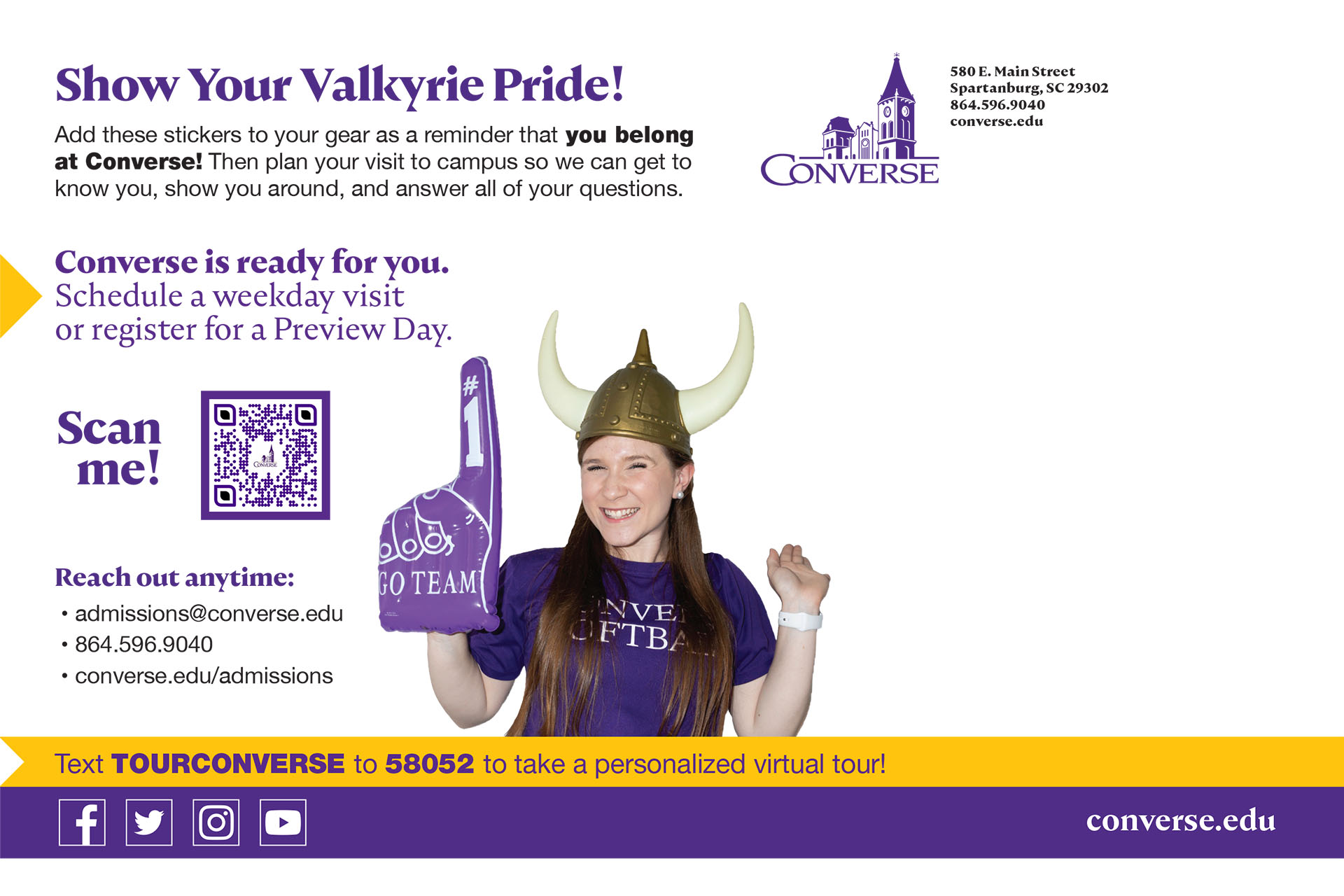
Converse University utilized our “tech tattoo” mailable postcard concept to encourage prospective students to engage with—and display—their brand. Design and printing services were provided by Encoura’s Enrollment Marketing Solutions team.
Recommendation: Work to Build Out Your First-Party Data
First-party data is information you collect directly from users. Access to first-party data enables you to understand your stakeholders, personalize experiences, and make informed decisions. It is crucial for building trust, enhancing engagement, and implementing targeted marketing strategies. Additionally, in a privacy-focused era, relying on first-party data allows you to maintain control over your data.
What We Know
Third-Party Cookie Changes
Google plans to phase out all third-party cookie data by the end of 2024, which is what’s used to track users across websites. These cookies help with tracking and advertising to the right people but are criticized for privacy concerns, security risks, and lack of transparency.
You—and your prospective students—are likely seeing third-party cookie ads via social media, a web browser, or other apps. Think of it as your favorite pair of shoes following you around the internet with the hope that you’ll go back to buy them.
What the Research Says
Attitudes toward ads are changing. Our Student Sentiment Research uncovered that 50% of 2023 sophomores find ads helpful and informative, which is up 7% when compared to 2019 research. Sophomores also said they are neutral/have no feelings toward ads from colleges (42% in 2023) while only 7% said they find them “annoying.”
What to Focus On
Industry Examples
Focus on building first-party data and high-quality data sources from:
- First-party data sources, like the ACT® and Encoura Combined Data Set
- Website visits, including landing pages and forms
- Social media
- Lead generation campaigns (digital ads!)
- Emails
Applying This at Your Institution
It’s important to start optimizing your website and landing pages for first-party data. Make forms easy to fill out and leverage digital marketing campaigns that utilize first-person data including:
Focus on ways to build out your first-party data, which is information given directly from students. Partner with experts, like Encoura, to help you reach students with similar characteristics to your current students.
Let’s Talk Residential Targeting
We want to help your team reach prospective students using residential targeting. Use the calendar below to select a time that works best for your schedule.
